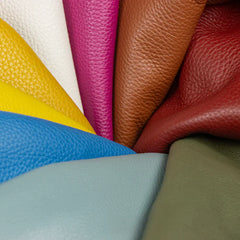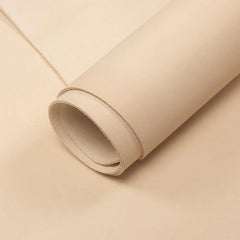Chrome Tan Leather VS. Veg Tan Leather
Antonia MarinoLeather has long been valued for its versatility and durability, with two primary tanning methods—chrome tanning and vegetable tanning—offering distinct types of leather for different purposes.
Which Leather to Choose?
- Chrome Tanned Leather: Best for projects that need softness, flexibility, and water resistance. Often for clothing, upholstery, accessories. It is often sewn on a machine and is already pre-dyed so can be used in its finished form immediately.
- Veg Tanned Leather: Ideal for durable, eco-friendly, and customizable creations with timeless appeal. Can be wet-moulded, burnished, stamped, tooled/carved, dyed and stained. It is often used by leathercrafters who work and sew by hand.
Chrome Tanned Leather

- Process: Uses chromium salts (e.g., chromium sulfate) for a fast and efficient process.
-
Characteristics:
- Soft, pliable, and requires minimal break-in time.
- Water-resistant, ideal for moisture-exposed products.
- Wide range of colors and finishes, thanks to synthetic dyes.
- Affordable and widely available.
-
Common Uses:
- Footwear: Comfortable and durable for shoes, boots, and sneakers.
- Upholstery: Luxurious feel for sofas, car interiors, and chairs.
- Accessories: Bags, wallets, belts, and other functional items.
- Garments: Jackets, skirts, and coats due to its softness and drape.
Veg Tanned Leather

Process: Traditional method using natural tannins from plants, such as tree bark.
Characteristics:
- Durable, stiff, and holds its shape well.
- Ages beautifully, developing a rich patina over time.
- Eco-friendly, using renewable materials with minimal environmental impact.
- Highly customizable for carving, tooling, and dyeing.
Common Uses:
- Belts and Straps: Stiffness ensures strength and longevity.
- Saddlery: Ideal for horse saddles and other equestrian goods.
- Tooling Crafts: Perfect for carved or tooled wallets, journals, and sheaths.
- Artisan Goods: Favored for hand-stitched, high-quality products.

